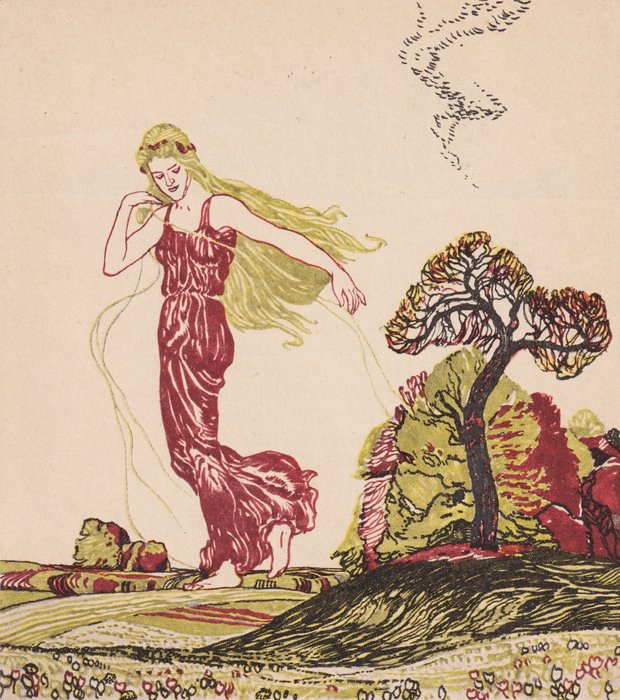
Franz Wacik (1883-1938) - "The Story of Gockel, Hinkel, and Gackeleia"
N.º 84197773

N.º 84197773

Paul Horst-Schulze (1876-1937) original chromoxylograph.
Original chromoxylograph (1910) by the German artist Paul Horst-Schulze (1876-1937).
" 'Short drive' from Joseph von Eichendorff
Posthorn, how bold and cheerful,
If you once dawned,
Before me it was so spring-like,
That I thought quietly about songs.
There is already a dark rustling in the forest,
How cool it gets here in the evening,
Brother-in-law, sound the horn – how soon
We are also in the night quarters!"
This work, specially made for illustrating the poems in the 7th book of Gerlach's Jugendbücherei, published in 1910. This series has a permanent place in the "Art Nouveau" / "Jugendstil" illustration podium.
"In terms of content, it can be interpreted that the lyrical self describes a short journey that may take place in a carriage. In the first verse he talks about the post horn, which energetically and cheerfully rings in the morning and inspires him to think about songs. In the second verse he talks about the rustling darkness of the forest, the cooling evening air and encourages the coachman to blow the horn because they will soon arrive at the destination of their journey, their night quarters."
Born in Naunhof, Horst-Schulze was a son of the Naunhofer pastor Moritz Hermann Schulze (1828-1909). At the age of seven, he suffered a serious back injury when he fell from a tree. Since he concealed the accident out of fear of his father, without medical treatment his back became so deformed that he had a hump for the rest of his life. At that time, this was a reason not to take up the training as a pastor that his father was aiming for. Instead, he studied at the Hochschule für Grafik und Buchkunst Leipzig from 1891 and at the Akademie der Bildenden Künste München from 1894, as well as one year at the Kunstakademie Düsseldorf. When he returned to Leipzig at the beginning of the 20th century, he was considered one of the most talented young Leipzig artists.
After designing home furnishings and samples for fabrics, his first major commission was the decoration of the Gnadenkirche in Leipzig-Wahren. For the church, which was built from 1901 to 1904 according to plans by the architect Raymund Brachmann (1872-1953) for the merchant Max Haunstein, he created the interior design of one of the most beautiful Jugendstil villas in Leipzig.
Dimensions:
H 115.00 x W 102.0 mm.
State of Conservation: Excellent conservation state; mounted and trimmed.
Como comprar na Catawiki
1. Descubra algo especial
2. Faça a licitação vencedora
3. Faça um pagamento seguro